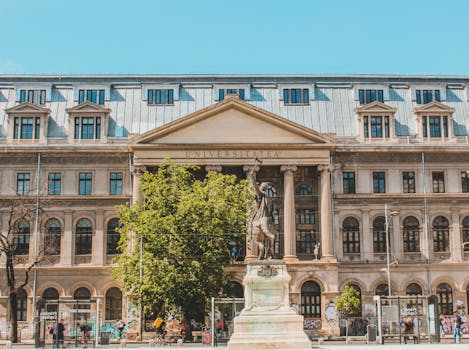
Traveling Through Time: How Europe’s Historical Heritage Shapes Modern Lifestyles in 2025
Traveling Through Time: How Europe’s Historical Heritage Shapes Modern Lifestyles in 2025. Europe, a continent steeped in history and tradition, has a unique ability to blend the old with the new. From the ancient ruins of Greece and Rome to the modern cities of London and Paris, Europe’s historical heritage continues to shape modern lifestyles in profound ways. In this article, we’ll explore how Europe’s rich cultural legacy influences everything from architecture to art, cuisine, and beyond.
Architecture and Urban Planning
One of the most visible ways in which Europe’s historical heritage shapes modern lifestyles is through architecture and urban planning. Many European cities have preserved their historic centers, with narrow streets, grand piazzas, and iconic landmarks like the Eiffel Tower or Big Ben. These historic districts not only attract tourists but also provide a unique and charming environment for locals to live, work, and play. Modern architects often draw inspiration from these historic buildings, incorporating traditional materials and techniques into their designs. For example, the use of brick, stone, and wood in contemporary buildings pays homage to the past while also ensuring that new structures blend in with their historic surroundings.
Art and Culture
Europe’s historical heritage has also had a profound impact on the continent’s art and culture. From the Renaissance to the modern era, European artists have been influenced by the masters who came before them. The works of Leonardo da Vinci, Michelangelo, and Rembrandt continue to inspire contemporary artists, who often incorporate traditional techniques and themes into their work. Museums and galleries throughout Europe are filled with an incredible array of historical and modern art, from the Uffizi Gallery in Florence to the Louvre in Paris. These cultural institutions not only preserve the past but also provide a platform for modern artists to showcase their work and connect with audiences.
Cuisine and Food Culture
European cuisine is another area where historical heritage has had a lasting impact. From the rich sauces of French cuisine to the bold flavors of Italian cooking, Europe’s culinary traditions are deeply rooted in the past. Many modern restaurants throughout the continent continue to serve traditional dishes, often with a contemporary twist. The use of local, seasonal ingredients and traditional cooking techniques ensures that these dishes remain authentic and flavorful. Food festivals and markets, like the Christmas markets in Germany and Austria, also celebrate Europe’s rich culinary heritage, offering a taste of the past in the present.
Modern Lifestyles and Traditions
Despite the many advances of modern technology and globalization, traditional practices and customs continue to play an important role in European lifestyles. Many countries still observe historic holidays and celebrations, such as the Tomatina festival in Spain or the Carnival of Venice in Italy. These events not only provide a glimpse into the past but also bring communities together, fostering a sense of shared identity and belonging. Modern lifestyles in Europe are also influenced by the continent’s historical heritage in more subtle ways, from the emphasis on family and social connections to the appreciation for fine food, wine, and art.
Conclusion
In conclusion, Europe’s historical heritage continues to shape modern lifestyles in profound ways, from architecture and art to cuisine and traditions. As we look to the future, it’s essential to appreciate and preserve this rich cultural legacy, not only for its historical significance but also for its ongoing impact on our daily lives. By embracing our shared heritage, we can build a brighter, more compassionate, and more beautiful future for all.




